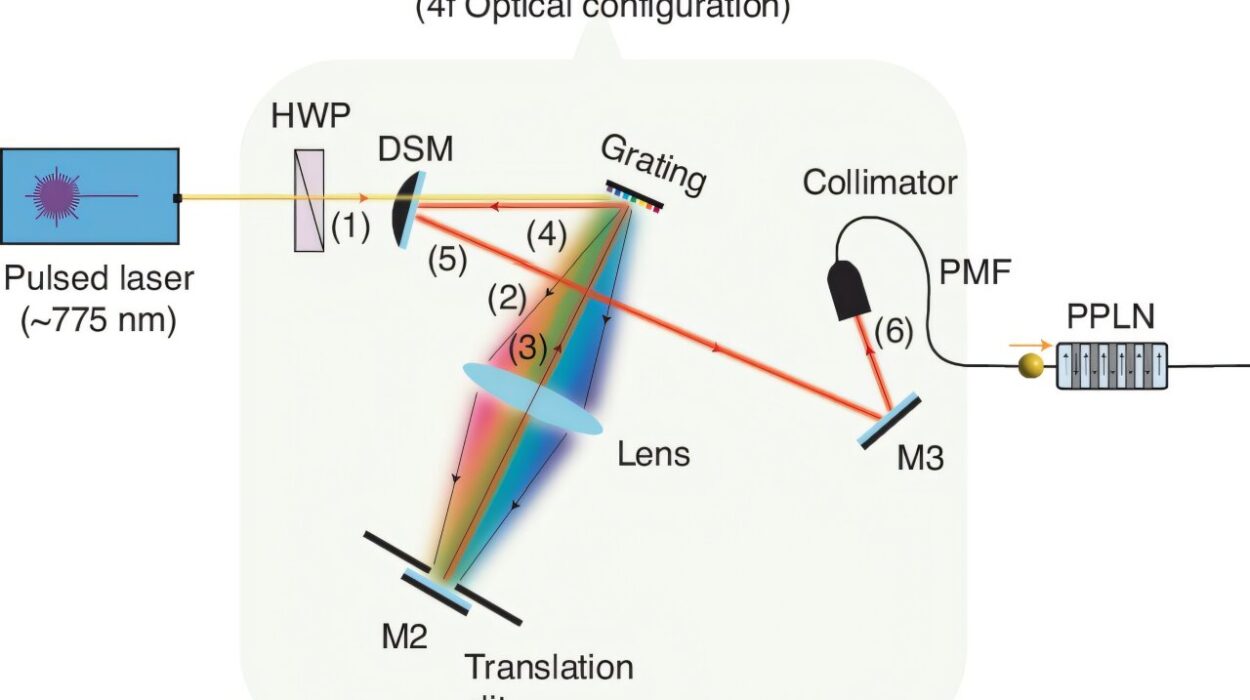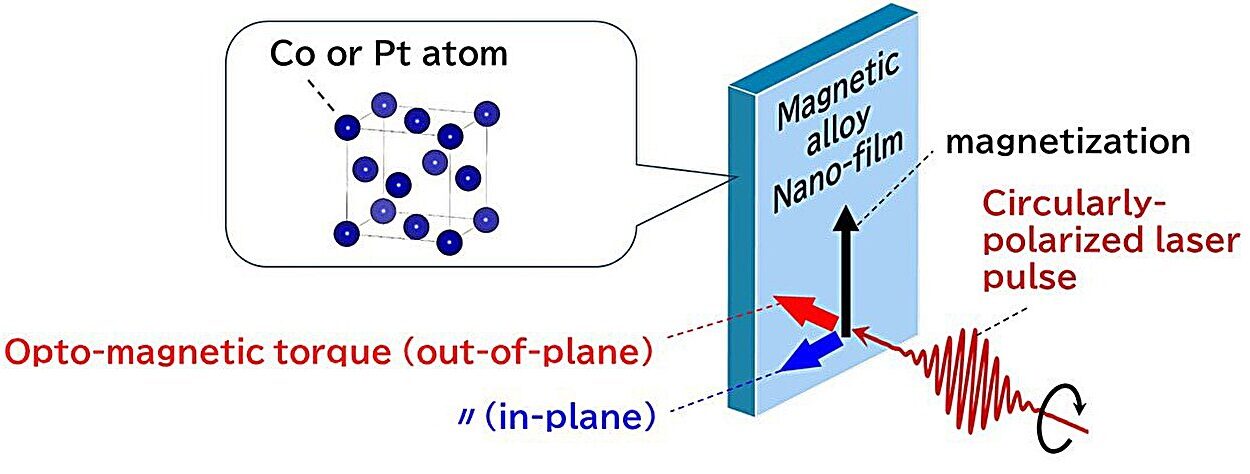In a significant breakthrough, a team of physicists and engineers at the University of Colorado Boulder has developed an innovative method for measuring the orientation of magnetic fields using what could be the smallest compasses ever created—atoms. This discovery has the potential to lead to new quantum sensors with a wide range of applications, including advanced technologies for mapping brain activity and even assisting in global navigation for airplanes. The study, published in the journal Optica, was led by physicist Cindy Regal and quantum engineer Svenja Knappe, marking an important step forward in the use of atoms to measure magnetic fields.
Atoms as Precision Sensors
The research highlights the incredible versatility of atoms, which can be trapped in vapor form and used to measure magnetic fields with unprecedented precision. As Regal, a professor of physics and a fellow at JILA—a collaborative institute between CU Boulder and the National Institute of Standards and Technology (NIST)—explains, these atoms serve as powerful tools for data collection. “Atoms can tell you a lot,” she said. “We’re mining them to glean simultaneously whether magnetic fields are changing by extremely small amounts and what direction those fields point.”
Magnetic fields are ubiquitous in our environment. The Earth’s iron-rich core generates a massive magnetic field that envelops the planet, and even your brain emits tiny magnetic pulses every time a neuron fires. While magnetic fields are all around us, measuring their direction accurately, especially on the atomic level, is a complex challenge. The team set out to address this issue by using a chamber filled with rubidium atoms in vapor form, which they bombarded with a magnetic field, inducing shifts in the atoms’ energy levels. These shifts were then measured using a laser, allowing the researchers to pinpoint the orientation of the magnetic field with incredible precision.
“You can think of each atom as a compass needle,” said Dawson Hewatt, a graduate student in Regal’s lab at JILA. “And we have a billion compass needles, which could make for really precise measurement devices.”
A New Approach to Magnetic Imaging
The significance of this research also extends to the broader field of magnetic imaging. Svenja Knappe, a research professor in the Paul M. Rady Department of Mechanical Engineering and co-author of the study, has long been interested in exploring the magnetic environment around us. Magnetic imaging plays a crucial role in measuring sources that are often hidden within dense or opaque structures. “What magnetic imaging allows us to do is measure sources that are buried in dense and optically opaque structures,” Knappe explains. “They’re underwater. They’re buried under concrete. They’re inside your head, behind your skull.”
This concept is particularly important in the field of brain imaging. In 2017, Knappe co-founded FieldLine Inc., a company focused on manufacturing atomic vapor magnetic sensors—also known as optically pumped magnetometers (OPMs)—which are used to map brain activity. The company produces sensors that are small enough to be integrated into helmets, enabling precise measurements of magnetic fields in the human brain.

However, while OPMs are highly effective at measuring small magnetic field changes, they do have limitations. One significant drawback is that these sensors perform optimally only in shielded environments, where external magnetic forces are minimal. When used outside these shielded rooms, OPMs can still measure the strength of magnetic fields but struggle to determine the direction of the magnetic fields, a critical piece of information for understanding brain activity, particularly in the context of neurological conditions.
Traditionally, engineers have relied on small metal coils that generate reference magnetic fields with known directions to calibrate their sensors. However, Knappe points out that these coils can degrade or warp over time, compromising the accuracy of measurements. Regal and her team sought a more stable, internal solution—atoms themselves.
Atom-Based Calibration for More Precise Sensors
The key to this new method is the use of microwave antennas as reference signals, instead of relying on external metal coils. By using the microwave signal to influence the behavior of the atoms, the team could correct for any drift in the reference signal over time. This novel approach allows for much more reliable and precise measurements of magnetic field direction without the need for external calibration devices.
Understanding Atomic Behavior for Magnetic Field Detection
Atoms, Regal explains, behave much like tiny magnets. When an atom is exposed to a microwave signal, its internal structure undergoes a “wiggle” or energy shift—an atomic “dance” that can provide valuable information about the magnetic field around it. By measuring these energy transitions with lasers, the team can determine the strength and direction of the magnetic field affecting the atom.
“Ultimately, we can read out those wiggles, which tell us about the strength of the energy transitions the atoms are undergoing, which then tells us about the direction of the magnetic field,” Regal said.
In their experiments, the researchers successfully used this atomic “dance” to measure the orientation of a magnetic field with an accuracy of nearly one-hundredth of a degree. This is an unprecedented level of precision, as most other sensors require careful calibration to reach similar accuracy levels. The researchers are optimistic that atoms could eventually be used to build even more advanced sensors with the potential to revolutionize a wide range of applications.
The Future of Atomic Sensors
While the team’s method holds great promise, the technology is still in its early stages. Before these atomic compasses can be deployed in real-world applications, there are still several technical challenges to overcome, particularly in improving their precision and robustness for use outside controlled laboratory settings. However, the team is excited about the possibilities.
In the future, these atom-based sensors could have numerous applications in fields ranging from healthcare to aviation. One particularly intriguing possibility is the use of atomic sensors in airplanes. By measuring local changes in the Earth’s magnetic field, these sensors could help pilots navigate the globe, much like how migratory birds use their own biological magnetic sensors to find their way.
“It’s now a question of: ‘How far can we push these atomic systems?'” Knappe said, acknowledging the vast potential of this emerging technology.
Conclusion
The team’s work represents a significant leap forward in the development of quantum sensors, utilizing the inherent properties of atoms to measure magnetic fields with incredible precision. By using atomic vapors as the “compass needles,” the researchers have developed a method that could enable a new generation of sensors with applications in brain mapping, global navigation, and beyond. As the technology matures, it may open the door to a range of revolutionary devices that can measure the world around us in ways never before possible.
With further advancements and refinement, atomic sensors could reshape the future of quantum technologies, offering a deeper understanding of the magnetic forces that govern everything from our brains to the Earth itself. The journey to harness the full power of these tiny atomic compasses is just beginning, and the potential is enormous.
Reference: Christopher Kiehl et al, Accurate vector optically pumped magnetometer with microwave-driven Rabi frequency measurements, Optica (2024). DOI: 10.1364/OPTICA.542502






